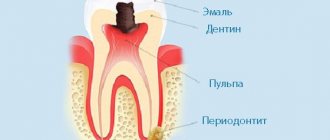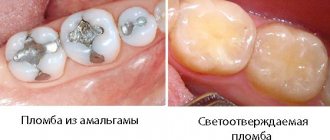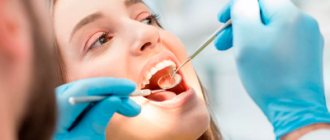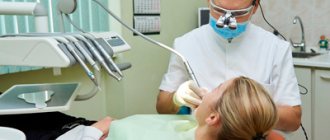Ears hurt in both children and adults, on one or both sides, and the disease is most difficult to diagnose in young children: you can determine that a child has an earache only by his behavior or by touching the sore spot.
Pain sensations are different:
- mild itching;
- constant dull pain;
- sharp “shooting” pain in the ear or ears.
In medicine, there is the concept of “radiating” pain: in the case of the ears, it is not the hearing aid that is affected, but other organs: the nasopharynx, teeth, nervous system and even the spine.
Treatment of the pathological condition
What to do if pain occurs in the ear? Since an ordinary person often cannot independently determine the reasons that caused this phenomenon, the first thing you need to do is visit a doctor. An otolaryngologist deals with all kinds of ear diseases. During the initial examination and collection of patient complaints, the doctor will be able to make an accurate diagnosis and discover which factor can lead to the occurrence of a particular pathology.
The further scheme for eliminating painful sensations and the inflammatory process will depend on the etiology of the disease and its degree of development. For example, if the cause of pain is otitis media, then its treatment method will involve the use of special ear drops that have antibacterial and anti-inflammatory properties (Otofa, Normax, Cipropharm and others). Typically, the course of such therapy lasts no more than one week. In addition to ear drops, the doctor may recommend that his patient use medicinal ointments if otitis media is of external origin.
If the ear hurts and is swollen due to the formation of wax plug inside it, then treatment in this case will involve cleaning with a special syringe. To do this, a syringe is filled with a disinfecting solution, usually made from furatsilin, and a stream of liquid is injected into the ear canal, which then simply washes out this plug. To completely clean the ear, one such procedure is generally sufficient. However, in advanced cases, several washes may be required.
If the auricle is slightly injured, the patient is prescribed a certain course of treatment using warming procedures. For example, this could be the use of heating pads and warm lotions based on medicinal plants. You can do them yourself at home. If there is serious damage to the hearing organs, then subsequent elimination of the problem is carried out only in hospitalization and, if necessary, with surgical intervention.
If the causes of pain under the ear or inside it lie in the presence of various diseases of the oral cavity, in particular the nasopharynx, treatment will involve eliminating the main factor that provoked the appearance of pain under the ear, that is, dental pathologies.
Treatment
The patient must immediately accustom himself to the idea that only an ENT specialist prescribes treatment: medications, their dosage, rinsing, instillation, etc. can only be taken after consulting a doctor. Conditions associated with ear pain are treated with medications or surgery.
Drug treatment
Having determined the diagnosis, the doctor in most cases prescribes treatment with medications. If the cause of ear pain is “ear” diseases, then the sick person is prescribed antipyretic, painkillers, as well as drugs intended to destroy the source of inflammation and its causative agents - bacteria, fungi or viruses. Medicines are often taken orally, made into compresses or instilled into the ear.
Surgical intervention
In some cases associated with complications caused by inflammatory processes, an ENT specialist may prescribe a surgical operation - tympanopuncture or puncture of the eardrum. This measure is taken, for example, in case of an advanced disease - purulent otitis media. In any case, it is worth following the doctor’s recommendation: the eardrum will heal even after repeated punctures, but it will most likely not be possible to cure a purulent disease in any other way.
During treatment, it may be necessary to consult doctors of other specialties, depending on the causes of ear pain:
- therapist - to eliminate concomitant diseases (acute respiratory infections, flu, sore throat, etc.);
- dentist or prosthetist - if the pain is caused by damage to the teeth;
- endocrinologist - in case of detection of diseases of the endocrine system;
- ENT surgeon - when following a doctor’s recommendation to perform a puncture of the eardrum;
- rheumatologist - to make a possible diagnosis - arthritis or arthrosis of the temporomandibular joint.
Prevention
To prevent ear pain, you must remember and take the following measures:
- completely cure acute respiratory infections, colds, runny noses and sore throats - they are the causes of inflammation of the middle and inner ear;
- avoid hypothermia - wear clothes appropriate to the season, and in cold weather wear a hat that covers your ears;
- visit the dentist: a “hole” in the tooth is a possible cause of a complication that will “come back” with pain in the ears;
- To prevent childhood otitis, teach your child to blow his nose correctly: first pinch one nostril, then the other. Under no circumstances should you cover both nostrils at once with a scarf;
- after you have fed the baby, keep him in an upright position: after burping, “extra” milk will not get into the nose, and from there into the middle ear through the auditory tube.
Why does my ear hurt?
Ear pain in nature can be aching, shooting, throbbing, acute or with a sluggish manifestation. There are many reasons why the outer parts of the ears hurt; it is difficult to determine them yourself. The main pathology that is accompanied by this symptom is otitis media, but there may be other causes.
When the outside of the ear hurts, this is the first signal for the patient to urgently contact a medical facility. Inflammation of the tissue can spread to other nearby organs, causing life-threatening complications.
The main cause of inflammation of the outer ear and the appearance of pain is the introduction of an infectious agent.
Often it penetrates into the middle ear from the oropharynx through the Eustachian tube, starting an inflammatory process that subsequently spreads to the external auditory canal and concha. Patients with rhinitis, tonsillitis, and sinusitis are at risk, since these organs are closely interconnected.
- Why does the jaw hurt near the ear on one or both sides, treatment options
In addition to the direct route of infection, it can enter the ear through the bloodstream from other sources of inflammation in the body. The main symptom indicating the development of pathology in the ear is acute pain that appears when you press on the tragus area.
Pain in the outer ear also occurs for other reasons:
- neuritis, neuralgia;
- a bite of an insect;
- penetration into the ear of an insect;
- ingress of a foreign object or water;
- pustular formations (boils, carbuncles);
- poor or improper care;
- eczematous rashes;
- mycoses;
- neoplasms;
- viral rashes;
- injury;
- thermal impact.
A more life-threatening condition for the patient is when the ear cartilage hurts. This symptom indicates perichondritis. Pathology occurs due to insect bites, allergies, exposure to low and high temperatures, and rashes. With this disease, not only the skin of the ear becomes inflamed, but also its inner part, the cartilage, which leads to necrosis and deformation of the ear.
Diagnostics
Regardless of the cause of pain in the ear or ears, a strong recommendation is to immediately consult an otolaryngologist, or, in his absence, a general practitioner. This is especially true for patients with severe pain, discharge from the ears, fever and combination with other alarming signs.
Methods used in modern medicine to diagnose hearing diseases:
- anamnesis - data collection: patient interview, external examination, study of medical documentation;
- examination using medical devices;
- appointment of laboratory tests;
- comprehensive examination with the involvement of other specialized specialists;
- X-ray or computed tomography - in case of complications and other necessary cases.
Young children who experience ear pain are reluctant to contact a doctor, so collecting primary data in such cases is difficult.
To examine the ear canals, the otolaryngologist will use an otoscope, a medical optical device. In some cases, a pneumatic modification is used to collect fluid discharged from the ear for laboratory testing. Determining the type of inflammatory agent simplifies the prescription of treatment.
Reasons: is it possible to list them all?
Any experienced doctor knows that it is very difficult to immediately understand why the outer part of the patient’s auditory system hurts. The condition is possible due to injury, including that caused by pressure. There is a possibility of an insect bite that a person did not even notice. Some people get ear ache because they don't clean them properly. If hygiene rules are not followed, sulfur plugs are formed. External symptoms may occur due to water entering the internal area. Possible deterioration of the Eustachian tube or neurological disease. Pain in the outer part of the ear is a signal of acne, boil, or dermatological disease.
If the painful sensations are pulsating and accompanied by shooting, it may be otitis media. To correctly determine the cause of the condition, you need to come to the hospital. You don't need to do anything to your ear before doing this. When the pain is unbearable, you are allowed to take painkillers.
Types of ear pain
Depending on the cause, ear pain can be of a varied nature: develop abruptly or gradually, be insignificant or severe. Painful sensations can be either constant or periodic, “shooting” in nature. The pain may be described by the patient as dull, aching or burning. Ear pain may be accompanied by hearing loss, noise or crackling in the ears; may radiate to the jaw, teeth or temple.
If an adult is able to independently distinguish and describe the painful sensations that bother him, then a child, especially a younger one, is not capable of this. Therefore, parents should be wary if the child lies down on the side of the sore ear, rubs it with his hand, or shakes his head. First of all, this applies to children who have ARVI, because otitis media is a common complication of colds.
How to fight?
If the ear hurts from the outside when pressed, and examinations show perichondritis, you will have to undergo a full multicomponent drug course. The doctor may prescribe anti-inflammatory medications. Sometimes steroids are used. They may prescribe medications for local application or drugs for systemic use. If the process is complicated by bacterial invasion, antibiotics are prescribed.
To keep the body normal and minimize undesirable aspects of the therapeutic program, they use products to strengthen the immune system, substances to correct the acidity of the gastric environment, and vitamin complexes. The patient’s task is to strictly follow the doctor’s recommendations. With irresponsible treatment, there is a risk of worsening the condition and complications.
Everything is interconnected
The elements of the hearing aid are closely related to each other. If one person begins to hurt, the sensations can soon spread to all other parts of the system. If the ear hurts from the outside, it is painful to touch this part of the organ, it can be assumed that the internal membrane is ruptured, or the area is perforated. Sometimes pain indicates an injury. In other cases, it indicates infection of the internal part of the auditory system.
- Why does the jaw hurt on one side when chewing near the ear: what does pain on the right and left mean, how to treat it?
The ear is closely connected with the nose and throat. If the external part of the auditory system hurts, then most likely the pathology has already affected nearby organs. As medical studies have shown, for some, the external part of the apparatus is affected due to joint ailments. In all cases, treatment involves determining the root cause.











